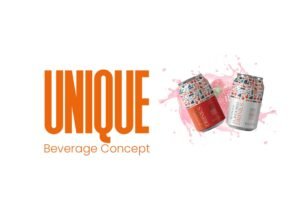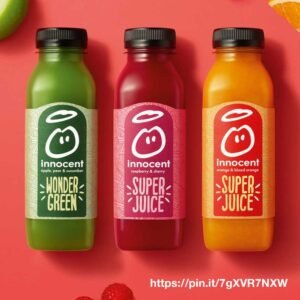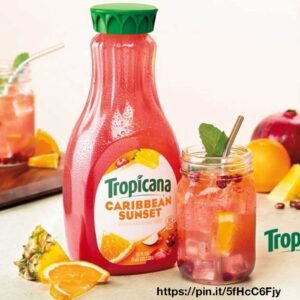Ever dreamed of seeing your drink on store shelves? You’re not alone! With more people looking for exciting new beverages that aren’t just tasty but also good for them, now’s the perfect time to jump into the beverage business. But wait- where do you even start?
Take a deep breath! No matter the product, whether it is a carbonated beverage for refreshment, an energy drink, or a functional wellness drink, we can make a big difference. Stay tuned with us to learn the steps to start a beverage company. Add your name to the list of Red Bull, Coke, Tropicana and much more.
Why start a beverage company now? Come on, everybody is eager for something new! They’re saying goodbye to boring old drinks and hello to beverages that:
- Make them feel good
- Offer health benefits
- Bring exciting new flavors
- Fit their lifestyle
Are you curious to know the formula for success? Let’s go together! We have awesome steps ahead of you. This is your ultimate beverage business startup guide.
Read More: The Art And Science Of Beverage Recipe Formulation
How To Start a Beverage Company – Steps
Step 1: Research the Beverage Industry and Identify Trends
The beverage industry is filled with new ideas, and what can set you apart is industry knowledge and innovation in new trends. Before you jump into creating your dream drink, you must have depth insights about the industry. You want to know where you stand, don’t you? What’s new in the beverage sector? Brainstorm the idea properly and make a smart move.
How to Conduct Beverage Industry Research
The best way is to hire a beverage recipe consultant who can do everything for you. Contact Foodsure, your one-stop solution. They use a smart strategy to gather the right insights, like
- Read Industry Reports – They check reports from Mordor Intelligence, MarketResearch.com, or Statista for market data to make you market-ready.
- Understand the Consumer Behavior – Follow social media trends, online reviews, and consumer surveys to see what people like.
- Study Competitors – Look at successful beverage brands and analyze their product positioning, pricing, and marketing strategies.
- Attend Industry Events – Join beverage expos, trade shows, and networking events to learn from industry experts.
- Talk to Your Target Audience – Conduct focus groups or surveys to understand what potential customers are looking for.
Trends in the Beverage Industry
- Health-focused drinks: Lights, no sugar, and plant products such as kombuchas, juices, and protein drinks.
- Sustainability: Consumers also care about packaging, using environmentally friendly materials, and responsibly sourced ingredients.
- Plant-based drinks: Almond milk, oats, and coconut water are some examples of dairy substitutes.
- Functional drinks: Beverages that help with hydration, energy, protection against illness, and relieve stress, such as energy drinks and electrolyte water.
- Premium products: Consumers are willing to part with their money to purchase high-quality, differentiated, and flavored drinks.
Knowing what people love (and what they don’t) helps you create a drink they’ll want to buy! Plus, you’ll spot gaps in the market where your unique drink can shine. A beverage formulation consultant can help even in setting trends.
Step 2: Competitive Analysis & Benchmarking
The next most important step is smart analysis of your competitors. What’s already present in the market, and what you can learn from their gaps, and create opportunities by providing something unique and refreshing to the market. A strong competitive analysis helps you position your brand for success. Here’s how you can do it:
Search for your Competitors
Research both direct and indirect competitors in your segments—cover all the things about related expertise they provide. It can be energy drinks, functional beverages, adaptogenic beverages, prebiotic and probiotic beverages or organic juices. Look at major brands like Red Bull, Gatorade, and Naked Juice, along with newer brands that are shaking up the industry.
Benchmark Against Leading Brands
Take a closer look at successful beverage brands and analyze what makes them shine. Here are some key factors to consider:
- Product Differentiation: What unique ingredients, flavors, or health benefits do they offer?
- Pricing Strategy: Are they positioned as a premium, mid-range, or budget-friendly brand?
- Marketing & Distribution: Where do they sell their products? Are they focused on retail stores, e-commerce, or direct-to-consumer sales? How do they advertise?
- Customer Reviews & Loyalty: Check online reviews to see what people love or dislike about competing products.
How to Use Competitive Insights to Build a Successful Beverage Brand
Once you understand the market, use this information to create a beverage product that stands out:
- Find the gaps – Learn from gaps and look for opportunities where your product can offer something better or different.
- Differentiate your brand – What new can you bring to the table? Whether it’s a unique flavor, functional benefits, or eye-catching packaging, make your product memorable.
- Price it smartly – Position your beverage competitively while maintaining profitability.
Create a strong marketing plan – Highlight what makes your beverage brand special and choose the best platforms to reach your audience.
Step 3: Develop a Unique Beverage Concept
Why be another drink in the crowd when you can be THE drink everyone’s talking about? Let’s make your beverage the one that makes people say, “Where has this been all my life? So, developing a unique beverage concept. Create a winning beverage recipe with us.
To develop your concept, consider the following:
Target Audience
Identify who your target consumers are. Are you targeting health-conscious millennials, busy professionals, athletes, or parents looking for healthy beverages for their children?
Who will buy your beverage?
- Health-conscious millennials looking for sugar-free options?
- Busy professionals in need of quick energy boosts?
- Athletes who require hydration and muscle recovery drinks?
- Parents searching for nutritious and kid-friendly beverages?
What are their needs and preferences?
- Do they prefer plant-based, functional, or indulgent drinks?
- Are they looking for low-calorie, high-protein, or sustainable packaging options?
Where do they shop and consume beverages?
- Do they buy from supermarkets, cafes, gyms, or online stores?
- Do they drink beverages on the go, at work, or at home?
Define Your Beverage Niche
Will your beverage be health-focused, refreshing, functional, or indulgent? Search for it.
- Health & Wellness Drinks – Kombucha, detox teas, cold-pressed juices, functional waters.
- Functional Beverages – Protein shakes, electrolyte drinks, immunity-boosting juices.
- Energy & Performance Drinks – Caffeine-based, natural energy boosters, nootropic-infused drinks.
What Makes Your Beverage Unique?
What makes your beverage different from others in the market? Make it unique.
- Unique Ingredients – Does your beverage contain rare superfoods, adaptogens, or organic flavors?
- Innovative Flavor Combinations – Can you mix unexpected flavors like turmeric-lavender or mango-chili?
- Health Benefits – Does it support gut health, improve focus, or boost immunity?
- Sustainable Packaging – Can you use biodegradable, reusable, or refillable packaging?
Problem-Solving: Think about how your beverage solves a problem. Does it help with hydration, provide a burst of energy, or offer nutritional benefits?
Step 4: Create a Business Plan
Think of a business plan like your drink’s recipe for success- it’s where all the important ingredients come together! Why you need a winning plan: Shows investors you mean business, maps your path to success, helps you dodge costly mistakes, makes money management easier, etc.
Your beverage company business plan should include the following sections:
- An overview of the beverage company, the product, and the opportunity to serve a particular market.
- A report on your market and clients, as well as your competitors and the market trends.
- List of the offered beverage products, ingredients, and major advantages of your drinks.
- Branding strategy is your brand name, logo, and your message.
- The estimated revenue, cost, and profit for your business for the coming few years. The initial costs of setting up the business, the costs of producing the product, and finally the marketing costs.
- How you will get your beverage to market and sell it, both online and offline, and how it will be sold by others through distribution or promotional campaigns or promotions.
The best plans don’t just consist of a paper- they are your guide to making your drink the next big thing! Ready to plan your success?
Step 5: Compliance & Regulatory Information
Stay on the right side of the law! Here’s what you need:
- FSSAI (India) / FDA (USA) – Get food safety approvals.
- Ingredient Rules – Some additives and preservatives have restrictions.
- Labeling Laws – Ensure nutrition facts and health claims are accurate.
- Packaging Rules – Follow eco-friendly and recycling regulations.
Step 6: Source Ingredients and Find a Manufacturer
Starting with great ingredients is like cooking a special recipe, it’s like cooking your grandma’s special recipe with something very exciting but on a bigger scale! That includes the first sip and the last one, equally essential, to making people happy.
Ingredient Sourcing:
- Quality: Make sure that you use the best quality of the ingredients; these functional ingredients include vitamins and electrolytes.
- Sustainability: For sustainability to be part of your business model, select suppliers who align with your values.
- Consistency: Your product has to be of the same taste regardless of the batch it falls under.
Manufacturing:
There are two primary options for manufacturing for your beverage company: producing your beverage in-house or working with a contract manufacturer.
- In-House Production: This option allows total control over the production process it also comes with large costs in equipment, facility, and people. It only works best for the beverage companies that have large investments.
- Contract Manufacturing: A more cost-effective option for new brands. Contract manufacturers can handle the production. Many can also help in areas that include packaging, labeling, and even how to increase the production procedure.
Whether you have an in-house production team or have outsourced the requirement to a company it is always important to engage with a trustworthy manufacturing partner so that the beverage brought to market is of the highest standard of quality, taste, and safety.
Step 7: Design Packaging and Branding
We all judge a drink by its bottle. Your packaging is not just a shell; it’s your salesperson on the shelf market bragging about your brand. Think about it: before anyone takes that first sip of that fantastic drink, they will be doused with the package. That first glance needs to make them think, “Wow, I need to try this!”
When designing your beverage packaging, consider:
- Communicate Your Brand Identity: Your packaging should communicate its unique message.
- Material Choices: The type of material that you use in packaging can be a determinant of how your beverage is perceived. For example, glass bottles give drinking products a status of exclusivity, while canned products are cheaper and more convenient to ship.
- Eco-Friendliness: Consumers these days are more conscious of what they consume, thus opting for environmentally friendly or earth-friendly packaging.
- Size and Functionality: Your packaging should be proportional to the requirements of your target market.
The right package doesn’t just protect your drink- it makes it unforgettable! Ready to create packaging that pops? Let’s make it happen!
Cover More Aspects: How to Create Buzz For Your Beverage Brand
Step 8: Set Up Your Distribution and Sales Channels
Think about where your perfect customer shops. Are they browsing supermarket shelves? Hanging out at trendy cafes? Shopping online? We’ll help you figure out the smartest way to get your drinks exactly where they need to be when they need to be there.
Direct-to-Consumer (DTC)
In using online sales, customers are buying from your website or e-commerce sites of your brand, so you have full authority there in price, and customer relations. E-commerce platforms like Shopify or Amazon can help you reach a wider audience.
Retail Distribution
If you want to reach even more people, you have to ensure that the beverage you are selling is on the shelves. This may require offering your product to grocery chains, convenience stores, and health food stores. You can contact the retailers yourself, or engage the services of distributors since they know the stores.
The food service channels are other potential outlets for beverage companies, including restaurants, cafes, hotels as well and bars. You could sell your beverage to these places and achieve good sales to the people as a way of expanding your market.
Step 9: Launch and Promote Your Brand
Time to let your drink shine! Whether you want to kick off the launch on social media or invite a few media outlets to a tasting event, ensure a dynamic launch. A truly great drink calls for fame– let’s make sure that moment counts! Here’s how to do it right:
- Sampling and Tastings: You can give out tasters for free during fairs, within shops, or on your website to familiarize customers with your drink.
- Influencer Marketing: Promote your product with influencers from the health or lifestyle niche, or specifically the food and beverages niche.
- Social Media Campaigns: Use platforms like Instagram, Facebook, and TikTok to engage with customers, share brand stories, and offer promotions
- Public Relations: Food and beverage bloggers, journalists, and publications should be contacted to make sure your brand gets media coverage.
- Online Advertising: Recommend an advertisement approach like Facebook or Google ads.

Case Studies
Tropicana: From Farm to Global Leader
➜ Founded: This Beverage Company was founded in 1947 by Anthony T. Rossi.
➜ Start: Started in Florida to sell fruit boxes; introduced the technique of pasteurization in fresh orange juice.
➜ Success: Launched as “pure, fresh juice,” introduced refrigerated cartons; expanded internationally; and became part of the PepsiCo stable.
Innocent Drinks: Health-Focused Success
➜ Founded: This Beverage Company was founded in 1999 by Richard Reed, Adam Balon, and Jon Wright
➜ Start: Announced to apply to a music festival; got much encouragement to launch
➜ Success: Distinctive and fun packaging, specialized healthy focused, and going international after being bought over by Coca-Cola.
Start Your Journey Today!
Every successful Beverage company once started with someone who wanted to create a new product just like you and me. Are you ready to be next? Call Foodsure at +91 8826313121 right now and talk to our team to get help regarding product designing, branding, and market analysis. Welcome to the world of beverages! Let’s create your beverage business empire!













